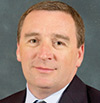Safety Leadership: It’s time to take ‘magical thinking’ out of safety leadership
During the recent Occupational Keynote at the 2014 NSC Congress & Expo, OSHA administrator David Michaels stirred up a little controversy when he said, “Just focusing on personal responsibility isn’t useful, and it isn’t the law.”
His remarks, which focused on the responsibility of employers to provide a safe workplace, were heard by some to be a criticism of behavior-based safety. As the CEO of a global firm that has done substantial work in the field for the past 30 years, I want to go on record stating that I firmly agree with Dr. Michaels. I will also go further and say that the tendency to blame employees, even 40-plus years after the creation of OSHA, is a sign of a deep cognitive dissonance within the safety field generally – and a failure of safety leadership specifically.
Nearly five years after the Deepwater Horizon oil rig explosion, we continue to see a focus on outcomes over process. In many places, the conditions that created exposures to serious injuries persist, glossed over by strongly worded pieties about “safety first.” The discussion in many circles still comes down to how to get workers to take more responsibility for safety, rather than how to understand and influence the organizational ecosystems that create hazards.
In other words, many leaders talk about improving safety without, in fact, having changed very much at all.
This is a form of what psychologists call “magical thinking”: the tendency to confuse thinking something with actually doing it. We mean to improve safety, set a vision, create an injury-free culture, and so on, but the bridge between intention and action is poorly defined and seldom crossed.
Criticism of behavior-based safety is nothing new. But in our time and place, we can no longer afford to indulge in a conceptual “feel good” kind of leadership that promises but fails to act. We live in a country that experiences 4,000-plus workplace fatalities and nearly 3 million recordable injuries a year. That is not a failure of individual responsibility; that is a failure of leadership. And the challenge is only going to become greater as rapidly changing business, technological and geopolitical realities encroach on the status quo.
Defining norms for a robust and active safety leadership across industry is work for multiple hands. To start, I propose four principles to guide leaders in taking ownership for the creation of a safe workplace:
- Hold yourself accountable first. When leaders emphasize worker responsibility, they put the burden on individuals who have the least control and the most to lose. Personal accountability has to start with the CEO. Fatal risks, as well as discipline, should start at that level, too. If a CEO doesn’t ask to be directly involved in a serious injury investigation, he or she should be as accountable for that “at risk” behavior as an operator failing to tie off when working at height.
- Know how safety really works. Too many senior leaders don’t understand the systemic nature of safety and focus on the wrong data. Their lack of understanding creates cognitive bias, recency bias and a sense that safety is somehow outside their control. Educate yourself about the body of major safety concepts and practices in operations, and know what you don’t know.
- Lead safety as if your family worked there. What would you do differently if you knew the risks in your workplace also affected your spouse or child? Keeping in mind the irreplaceable person behind every injury statistic helps you prioritize your actions – and remember that workers are your partners in safety, not your adversaries.
- Have a strategy. The leader’s job is to guide the organization to its destination – and that job is no different in safety. Always be able to articulate safety expectations and performance levels for one to five years down the road.
 Colin Duncan is CEO of DEKRA Insight, a global consulting firm offering safety advice and expertise in process and organizational safety through its two operations, Chilworth and BST.
Colin Duncan is CEO of DEKRA Insight, a global consulting firm offering safety advice and expertise in process and organizational safety through its two operations, Chilworth and BST.
Post a comment to this article
Safety+Health welcomes comments that promote respectful dialogue. Please stay on topic. Comments that contain personal attacks, profanity or abusive language – or those aggressively promoting products or services – will be removed. We reserve the right to determine which comments violate our comment policy. (Anonymous comments are welcome; merely skip the “name” field in the comment box. An email address is required but will not be included with your comment.)

